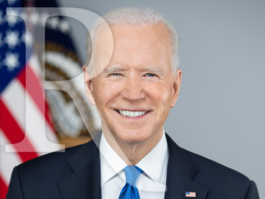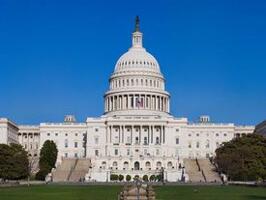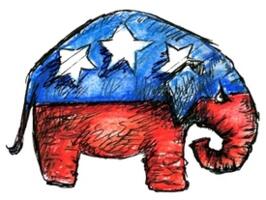Let's Speak Plain English About Spending Cuts
A Commentary By Scott Rasmussen
To borrow a phrase, Mainstream America and Washington's Political Class have become two nations separated by a common language.
This gap was highlighted by a recent Pew Research Center poll showing that "for 18 of 19 programs tested, majorities want either to increase spending or maintain it at current levels."
On the surface, those results appear to support the Political Class conceit that voters like spending cuts in the abstract but not in specific programs. That's the way it was reported by most media outlets.
But the reality is quite different. The Pew results actually show support for what official Washington would consider massive spending cuts.
Just to be clear, there is absolutely nothing wrong with the Pew poll questions or results. The raw numbers are similar to what we find at Rasmussen Reports. The problem is with the way the numbers were reported.
The questions were asked using the language of America, but they were reported using the language of the Political Class.
To most Americans, maintaining spending at current levels would mean spending the same amount in 2013 as we spent in 2012. However, to those experienced in the mysterious ways of Washington, maintaining spending at current levels means spending $3.5 trillion this year and $4.5 trillion in five years. To most Americans, that's a trillion dollars in spending growth.
The Political Class, on the other hand, would consider holding spending unchanged at current levels to be a massive spending cut. Why? Because it wouldn't allow for the trillion dollar spending growth that is already built into the budget.
With this understanding, the numbers from Pew take on an entirely different tone. Consider the Pew numbers for roads and infrastructure projects: 38 percent want more spending, and only 17 percent favor a spending cut. But a plurality (43 percent) wants to hold infrastructure spending steady. Since the Political Class would consider holding spending steady to be a "cut" in spending, 60 percent in the Pew poll favors what official Washington calls cuts.
It's worth noting that when you get to specific spending cuts, public support is even higher than it is for cutting abstract categories like "infrastructure." Most voters, for example, want to stop subsidies for Amtrak and are ready to freeze highway spending until the economy is stronger.
Using this understanding, the Pew data shows that voters prefer what the politicians call budget cuts in 17 out of 19 programs.
Some in the Political Class may simply be confused themselves. Others, however, are being intentionally deceptive. They are more interested in protecting government spending than in representing the American people.
Clearly, it would be a challenge to hold federal spending constant when so much growth is already baked into the budget for future years. Fortunately, though, as highlighted in my book "The People's Money," the American people are willing to support specific cuts when reasonable alternatives are presented.
So when politicians claim that sound polling data like the Pew study shows a lack of public support for spending cuts, they're either wrong or deliberately trying to deceive us. Voters shouldn't need a translator to understand what the Political Class is saying. But those in the Political Class bubble just don't speak plain English anymore.
To find out more about Scott Rasmussen, and read features by other Creators Syndicate writers and cartoonists, visit www.creators.com.
COPYRIGHT 2013 SCOTT RASMUSSEN
DISTRIBUTED BY CREATORS.COM
See Other Political Commentaries.
See Other Commentaries by Scott Rasmussen
Rasmussen Reports is a media company specializing in the collection, publication and distribution of public opinion information.
We conduct public opinion polls on a variety of topics to inform our audience on events in the news and other topics of interest. To ensure editorial control and independence, we pay for the polls ourselves and generate revenue through the sale of subscriptions, sponsorships, and advertising. Nightly polling on politics, business and lifestyle topics provides the content to update the Rasmussen Reports web site many times each day. If it's in the news, it's in our polls. Additionally, the data drives a daily update newsletter and various media outlets across the country.
Some information, including the Rasmussen Reports daily Presidential Tracking Poll and commentaries are available for free to the general public. Subscriptions are available for $4.95 a month or 34.95 a year that provide subscribers with exclusive access to more than 20 stories per week on upcoming elections, consumer confidence, and issues that affect us all. For those who are really into the numbers, Platinum Members can review demographic crosstabs and a full history of our data.
To learn more about our methodology, click here.





